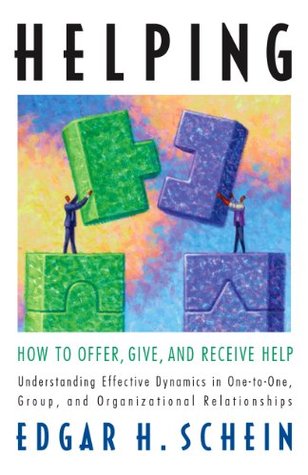More on this book
Community
Kindle Notes & Highlights
Read between
May 30 - June 18, 2013
PRINCIPLE 2: Effective Help Occurs When the Helping Relationship Is Perceived to Be Equitable
Remember that the person requesting your help may feel uncomfortable, so make sure to ask what the client really wants and how you can best help.
If you are the client, look for opportunities to give the helper feedback on what is and what is not helpful.
When someone offers to do something for me that I know I can do for myself, I feel patronized and insulted that the other person would think me incapable of doing it.
PRINCIPLE 3: Effective Help Occurs When the Helper Is in the Proper Helping Role
Never assume that you know what specific form of help is needed without checking first.
In an ongoing helping situation, check periodically whether the role you are playing is still helpful.
If you are the client, don’t be afraid to give feedback to the helper when you no longer feel helped.
PRINCIPLE 4: Everything You Say or Do Is an Intervention that Determines the Future of the Relationship
In your role as helper, evaluate everything you say or do by its potential impact on the relationship.
Communication is not a choice. Everything you do in a situation communicates something and is, therefore, an intervention of some sort.
The point is that no matter what you do or don’t do, you are sending signals; you are intervening in the situation and therefore need to be mindful of that reality. Unless you are invisible you cannot help but communicate, so your choice of communication should be based on what kind of intervention you intend.
If you are the client, you also should be aware that everything you do sends a message.
When you are giving feedback, try to be descriptive and minimize judgment.
PRINCIPLE 5: Effective Helping Starts with Pure Inquiry
You must always start with some version of pure inquiry.
No matter how familiar a request for help sounds, try to perceive it as a brand new request that you have never heard before.
Stereotyping the situation increases the risk that no relationship will be built and no help will be given.
PRINCIPLE 6: It Is the Client Who Owns the Problem
Be careful not to get too interested in the content of the client’s story until you have built the relationship.
One of the most dangerous traps for helpers is content seduction, and this is especially true if the helper happens to be an expert on the matter at hand.
Keep reminding yourself that no matter how similar a problem is to one that you feel you know all about, it is that other person’s problem, not yours.
PRINCIPLE 7: You Never Have All the Answers


